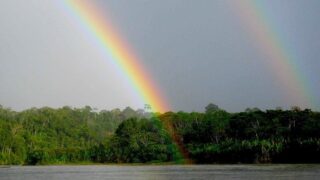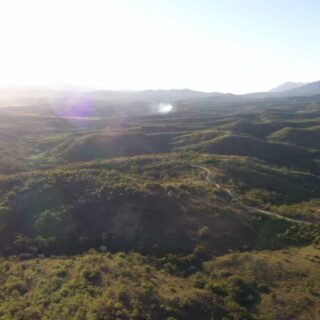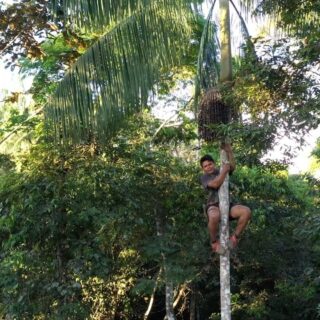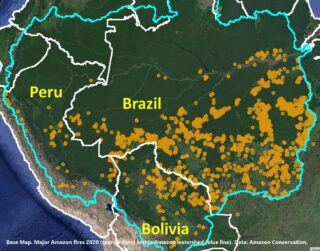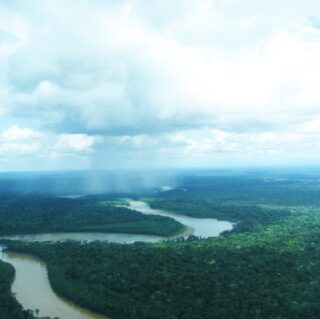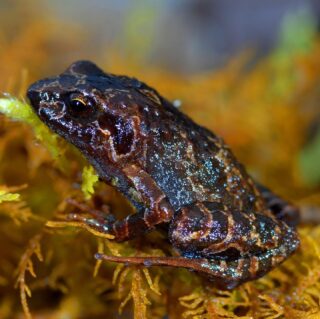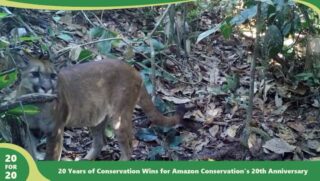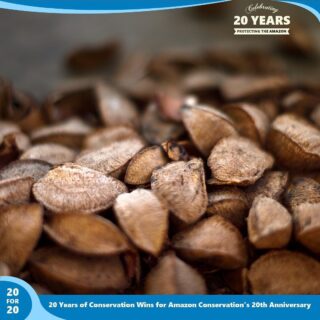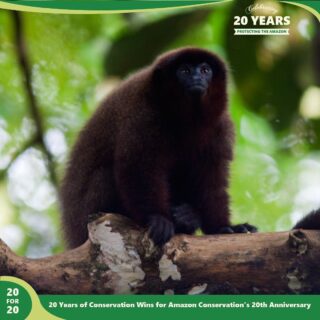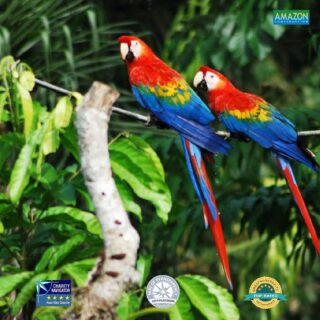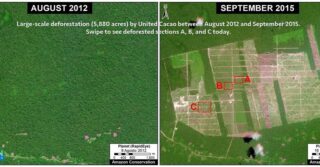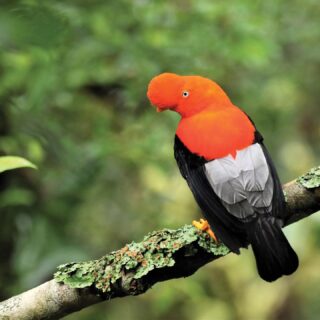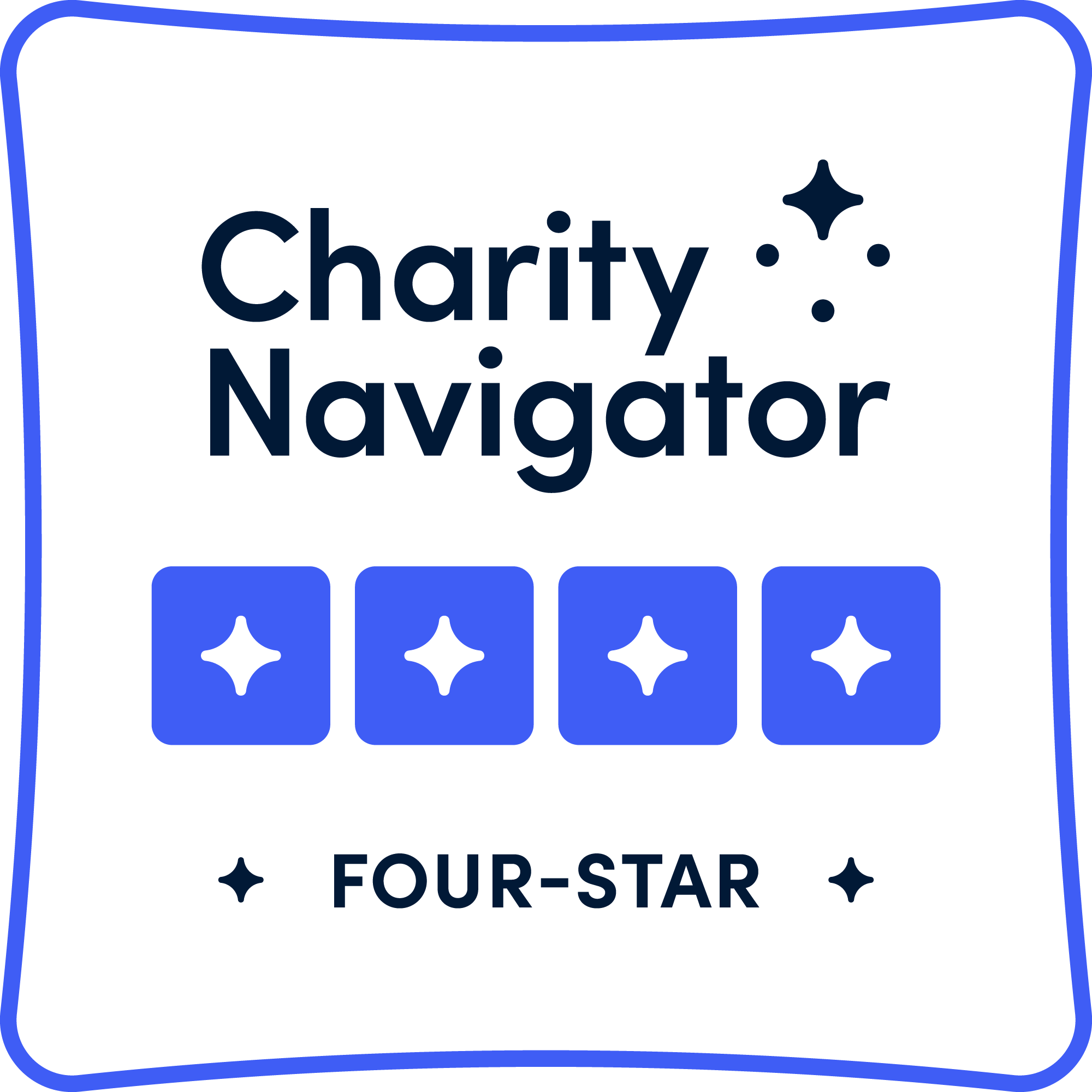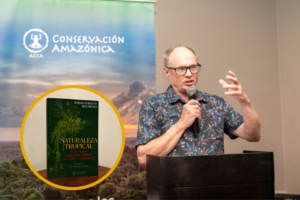 Last week, Amazon Conservation Co-Founder Dr. Adrian Forsyth joined our Peruvian sister organization, Conservación Amazónica-ACCA, for a special event to celebrate the launch of the Spanish edition of his book, Tropical Nature (Naturaleza Tropical), which transforms the ecological complexity of tropical forests into captivating stories about nature that Forsyth witnessed himself during various expeditions throughout the Amazon biome. As a scientist, writer, and conservation leader, Forsyth has inspired generations of conservationists through his vivid vision and unwavering dedication to the Amazon and the Neotropics—regions that are vital to understanding our planet’s ecological health and shaping global conservation strategies.
Last week, Amazon Conservation Co-Founder Dr. Adrian Forsyth joined our Peruvian sister organization, Conservación Amazónica-ACCA, for a special event to celebrate the launch of the Spanish edition of his book, Tropical Nature (Naturaleza Tropical), which transforms the ecological complexity of tropical forests into captivating stories about nature that Forsyth witnessed himself during various expeditions throughout the Amazon biome. As a scientist, writer, and conservation leader, Forsyth has inspired generations of conservationists through his vivid vision and unwavering dedication to the Amazon and the Neotropics—regions that are vital to understanding our planet’s ecological health and shaping global conservation strategies.
Tropical Nature offers a unique perspective on the intricate ecological functions of the Neotropics, meant to inspire generations of biologists and naturalists to learn more about the interconnectedness of plant and animal species with human welfare. Forsyth writes in the book’s introduction, “Our purpose is not merely to set down a compendium of interesting facts about tropical nature, but to provoke curiosity about how such a complex world might function and how it might have evolved.” He later wrote, “We felt a need for a book addressing the natural history of tropical rainforests that would be accessible to the legion of naturalists and interested laymen in the temperate zone who might wish to learn something of this remarkable world today.” Now, the Spanish edition of this iconic book can reach a new audience of conservationists located in and around one of the world’s most significant Neotropical regions.
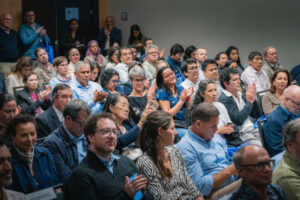
 The event “An Afternoon For Conservation with Adrian Forsyth,” hosted in Lima, Peru, celebrated the official launch of Naturaleza Tropical, and recognized Forsyth’s more than forty years of dedication to exploring and conserving this vital region that inspired this book. The event began with welcoming remarks from María Elena Gutiérrez, Executive Director of Conservación Amazónica-ACCA, who highlighted Forsyth’s profound impact on the protection of tropical forests and the formation of a global community of scientists and conservationists committed to the Amazon. She also extended special thanks to The Gordon and Betty Moore Foundation, whose generous support made it possible to publish this renowned work in Spanish. Key figures of the conservation world, including Amazon Conservation Co-Founder Enrique Ortiz; Avecita Chicchón and Aileen Lee of The Gordon and Betty Moore Foundation; and prominent international scientists such as Miles Silman, Michael Goulding, Russell Mittermeier, and John Terborgh, also shared moving accounts of Forsyth’s prolific accomplishments and his influence on their lives and careers.
The event “An Afternoon For Conservation with Adrian Forsyth,” hosted in Lima, Peru, celebrated the official launch of Naturaleza Tropical, and recognized Forsyth’s more than forty years of dedication to exploring and conserving this vital region that inspired this book. The event began with welcoming remarks from María Elena Gutiérrez, Executive Director of Conservación Amazónica-ACCA, who highlighted Forsyth’s profound impact on the protection of tropical forests and the formation of a global community of scientists and conservationists committed to the Amazon. She also extended special thanks to The Gordon and Betty Moore Foundation, whose generous support made it possible to publish this renowned work in Spanish. Key figures of the conservation world, including Amazon Conservation Co-Founder Enrique Ortiz; Avecita Chicchón and Aileen Lee of The Gordon and Betty Moore Foundation; and prominent international scientists such as Miles Silman, Michael Goulding, Russell Mittermeier, and John Terborgh, also shared moving accounts of Forsyth’s prolific accomplishments and his influence on their lives and careers.
Corine Vriesendorp, Conservacion Amazonica-ACCA’s Director of Science, led the presentation of Naturaleza Tropical, followed by a special appearance by photographer and editor Walter Wust, who highlighted how Forsyth invites us, through his written lines, to marvel at the simple things in life and nature. The event also featured a panel with Peruvian university professors who discussed the book’s relevance to the current challenges of climate change and biodiversity loss, as well as its impact on new generations of conservationists.
“This book is a masterpiece. The way it describes dung beetles is fascinating, and I found the chapter on canyons of light fantastic. The epiphytes, the small details… everything is told with unique sensibility,” remarked Marc Dourojeanni, Professor Emeritus at the Universidad Nacional Agraria La Molina, during the event. “Not much is written at this level in Spanish; this edition will allow many technocrats, students, park rangers, and guides to better understand what they observe. It is the universe of the minuscule, of patient observation. There are many imprecise interpretations out there, and this work helps restore wonder and respect for tropical nature.”
Forsyth shared how a National Geographic article from the 1960s about the Vilcabamba mountain range in Peru that he read at the age of 13 shaped his desire to pursue a career in conservation. He recalled how that first encounter with the Amazon eventually drew him deep into its heart – trekking in muddy boots, with no map or fixed plan, guided only by a single purpose: to protect it. He spoke of his deep devotion to Peru, describing how a place that once felt like a distant dream became the center of his life thanks to the support of people, such as Peruvian environmentalist Carlos Ponce del Prado, among many others who accompanied him along his journey. Forsyth also highlighted the importance of Peru’s system of natural protected areas, a unique model for conservation that the world should follow.
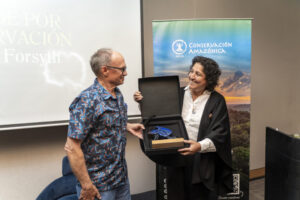
Adrian Forsyth receiving a gift in recognition of this prolific career
In his closing remarks at the event, Forsyth issued an important call to action: “In a world where new generations are growing up increasingly disconnected from nature, if this book inspires even one more person to explore the tropics and fight for their protection, then it will have been worthwhile.” In recognition of his legacy, Forsyth received a sculpture of the “Blue Beast of Death,” or dung beetle, one of the species he studied the most throughout his life. As the largest coprophagous beetle in South America, the dung beetle plays a crucial role in recycling nutrients and thus symbolizes the health of forests.
We at Amazon Conservation are extremely proud to celebrate the vision that our Co-Founders, Dr. Adrian Forsyth and Enrique Ortiz, planted more than 25 years ago: to create an organization dedicated to protecting the planet’s most diverse landscapes, training new conservation leaders, and working alongside communities for a sustainable future. Today, we, along with our sister organizations, Conservación Amazonica–ACCA and Conservación Amazonica–ACEAA, continue to work towards making this dream a reality by promoting high-level scientific research and fostering ways of living in harmony with the Amazon ecosystem. Our vision for a prosperous, resilient, and thriving Amazon remains resolute, and the inspiration of leaders like Dr. Adrian Forsyth paves our path towards effective conservation solutions with hope, commitment, and determination.
Watch the recording for “An Afternoon for Conservation with Adrian Forsyth.”


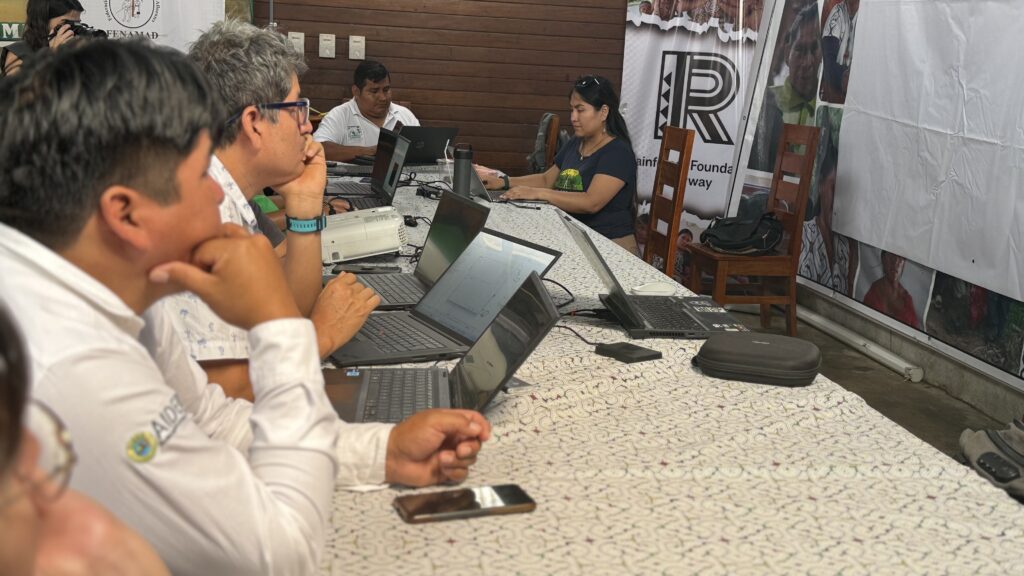 The work of community monitors, known as
The work of community monitors, known as  For Nadia Mamani, Senior Geospatial Analyst & Partner Strategy Lead at Amazon Conservation, the initiative’s power lies in its ability to bridge technology, law, and traditional knowledge. “This integration is essential to reversing the spread of illegal activities and supporting Indigenous-led conservation.”
For Nadia Mamani, Senior Geospatial Analyst & Partner Strategy Lead at Amazon Conservation, the initiative’s power lies in its ability to bridge technology, law, and traditional knowledge. “This integration is essential to reversing the spread of illegal activities and supporting Indigenous-led conservation.”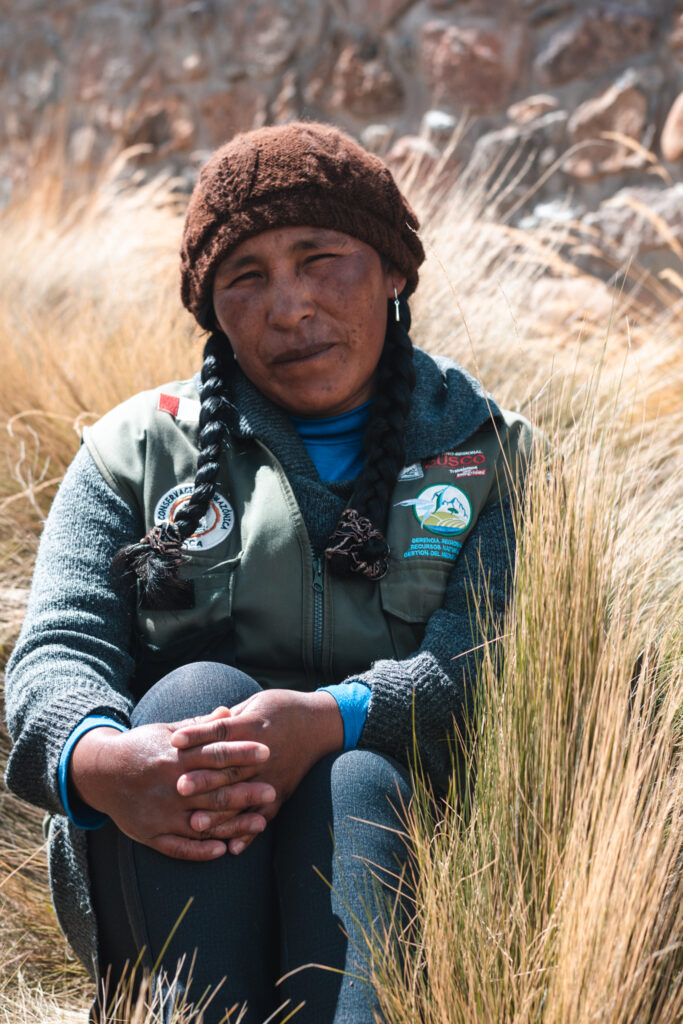
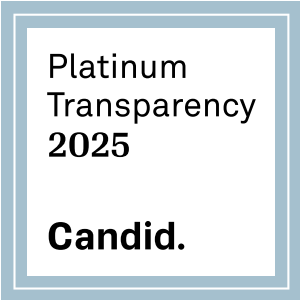 This Platinum Seal from Candid – the leading source of nonprofit data, previously GuideStar – reflects our ongoing commitment to transparency. From our program outcomes and leadership to financial information and strategic goals, our profile gives you an open window into how your donations drive real impact on the ground.
This Platinum Seal from Candid – the leading source of nonprofit data, previously GuideStar – reflects our ongoing commitment to transparency. From our program outcomes and leadership to financial information and strategic goals, our profile gives you an open window into how your donations drive real impact on the ground.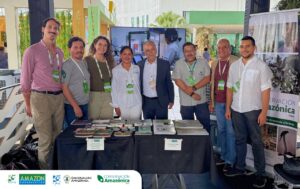 Last week, staff members from
Last week, staff members from 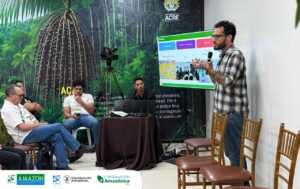 This year’s annual meeting marked an important step forward for Amazon Conservation, as our Alliance hosted a special side event called “People at the Center of Bioeconomic Transitions: Uniting Small Producers, Indigenous Peoples, and Local Communities,” to share progress updates on the development of the bioeconomy and facilitate dialogues between local producers in the Madre de Dios (Peru), Acre (Brazil), and Pando (Bolivia) regions of the Amazon.
This year’s annual meeting marked an important step forward for Amazon Conservation, as our Alliance hosted a special side event called “People at the Center of Bioeconomic Transitions: Uniting Small Producers, Indigenous Peoples, and Local Communities,” to share progress updates on the development of the bioeconomy and facilitate dialogues between local producers in the Madre de Dios (Peru), Acre (Brazil), and Pando (Bolivia) regions of the Amazon.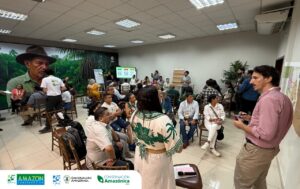 The exchange of experiences among producers of these countries sparked fresh hope and a collaborative spirit grounded in shared missions. As Manoel de Jesus, President of the Chico Mendes Extractive Reserve Association, said,
The exchange of experiences among producers of these countries sparked fresh hope and a collaborative spirit grounded in shared missions. As Manoel de Jesus, President of the Chico Mendes Extractive Reserve Association, said, 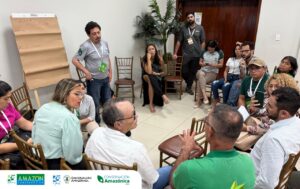
 Last week, Amazon Conservation Co-Founder Dr. Adrian Forsyth joined our Peruvian sister organization,
Last week, Amazon Conservation Co-Founder Dr. Adrian Forsyth joined our Peruvian sister organization, 
 The event “An Afternoon For Conservation with Adrian Forsyth,” hosted in Lima, Peru, celebrated the official launch of
The event “An Afternoon For Conservation with Adrian Forsyth,” hosted in Lima, Peru, celebrated the official launch of 
 As
As 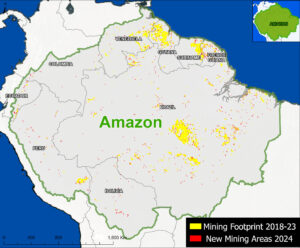 This report highlights several major findings:
This report highlights several major findings: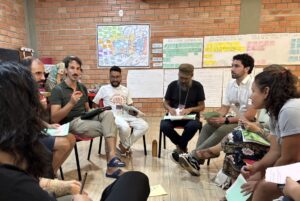
